Once upon a pandemic, we asked, “How do we get people back into the office?” Now, the better question is, “Why would they want to return?” Spoiler alert: it’s not for the free coffee.
Employees are seeking purpose, connection and positive experiences. And while home remains a productive haven, the workplace is being reimagined as a destination, not just a location. Digital signage has a pivotal role to play in this transformation.
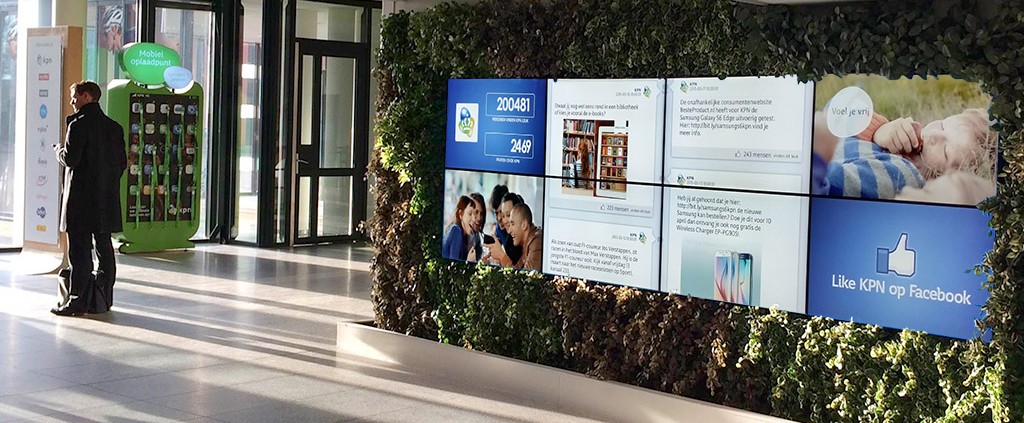
The Workplace Needs a Makeover, Not a Mandate
The age of passive workspaces is over. No more cold corridors with uninspiring screensaver slides or clunky bulletin boards. Today, leading companies are investing in environments that do more than host employees, they engage them.
Modern workplace experiences leverage digital signage as an integrated system of communication and culture. From interactive wayfinding to real-time announcements, fun polls and AI-curated content, digital signage is being woven into the very architecture of the office. It is no longer a bolt-on. It is part of the fabric.
Multichannel Mindsets for Hybrid Realities
One of the biggest hurdles is creating a cohesive culture across hybrid teams. Remote work isn’t going anywhere, and nor should it. But hybrid models have exposed a gap: how do we maintain a consistent, two-way dialogue when people are scattered across locations, time zones and screens?
This is where digital signage excels. With platforms like ZetaDisplay’s Engage Suite, businesses can create multichannel communication strategies that respect the employee journey. Content is tailored per channel, whether on-site screen, mobile, desktop or breakout space, and scheduled for the right time, right tone and right mindset.
Say Goodbye to One-Way Comms
Communication should feel like a conversation, not a broadcast. Yet many digital signage strategies still lean heavily on top-down messaging. The future? Dialogue. Screens that invite feedback, show recognizable faces, celebrate wins and surface insights in real time.
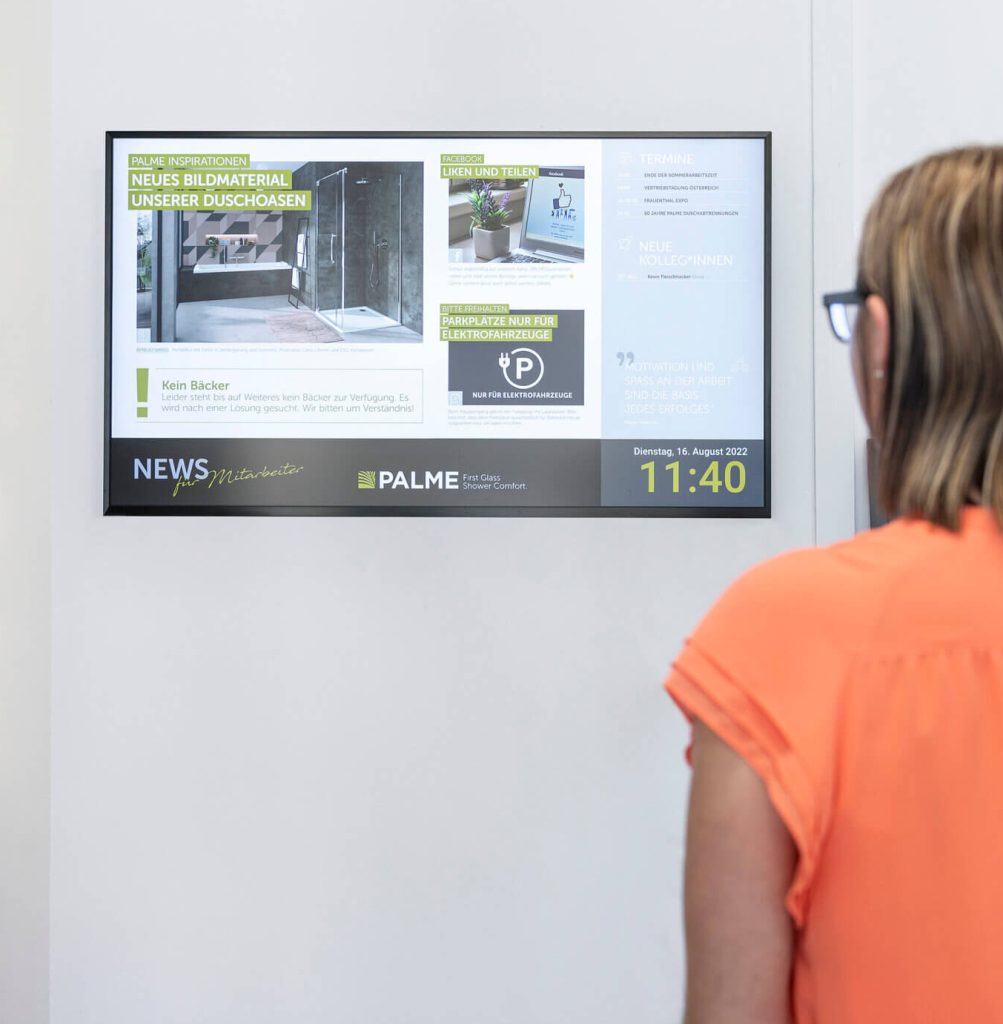
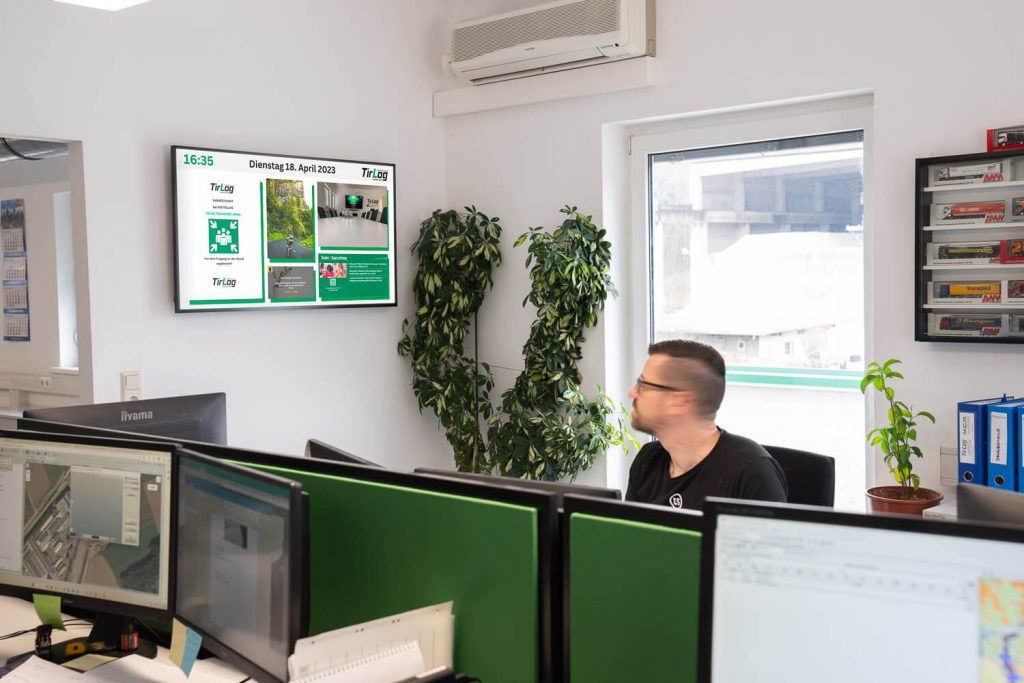
It is no longer enough to tell people what’s happening. We need to show them that they matter. This means content must be:
- Fresh: Outdated slides breed apathy
- Relevant: Use AI to target messaging per location and audience
- Positive: Boost morale and mood
- Interactive: Enable input, feedback, and engagement
Experience Zones: From Factory Floor to Kitchen Table
Not all employees start their day the same way. One person’s day starts in a warehouse. Another’s starts in their slippers. That is why we apply “zone thinking” to workplace content, a concept borrowed from retail strategy.
Think of the home office as zone one. The breakroom might be zone three. Each zone should have its own tone, purpose and messaging strategy. And yes, that includes respecting the boundary between work comms and personal time. Expecting employees to scan QR codes at home or engage after hours can cause friction.
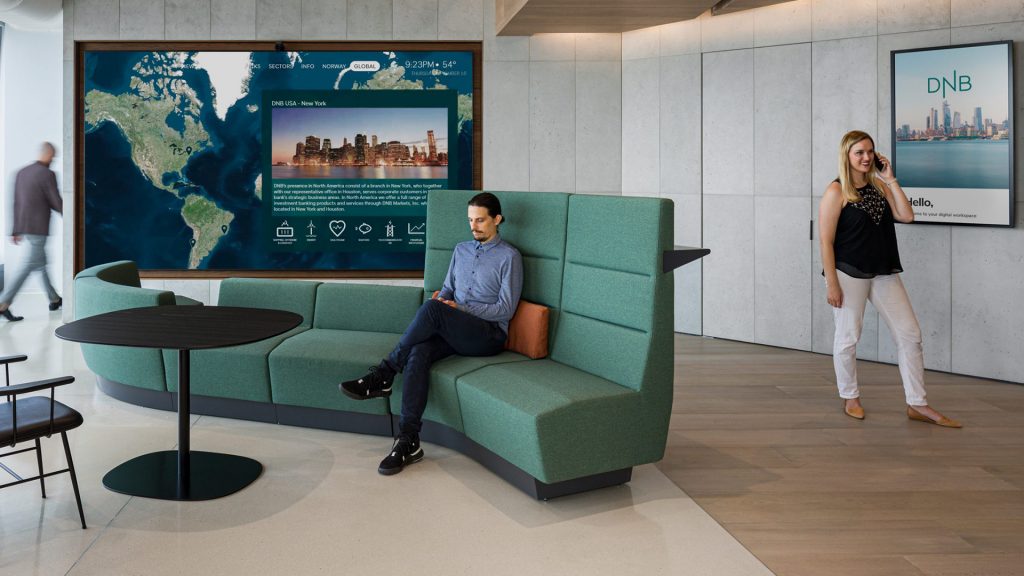
This strategy was brought to life in our work with DNB at Hudson Yards in New York, where we helped create a digital environment that complements the physical one, balancing information with inspiration across workplace zones.
Let’s Not Forget the “Fun” Factor
Engagement isn’t all strategy and metrics. Sometimes it’s about small wins like a birthday shout-out, a joke of the day, live polls or spotlighting a colleague’s success. Workplace content that entertains is content that gets seen.
With AI tools increasingly capable of translating, tailoring and refreshing messaging on the fly, there’s no excuse for digital fatigue. Smart automation can keep your screens dynamic and culturally tuned, without exhausting your internal teams.
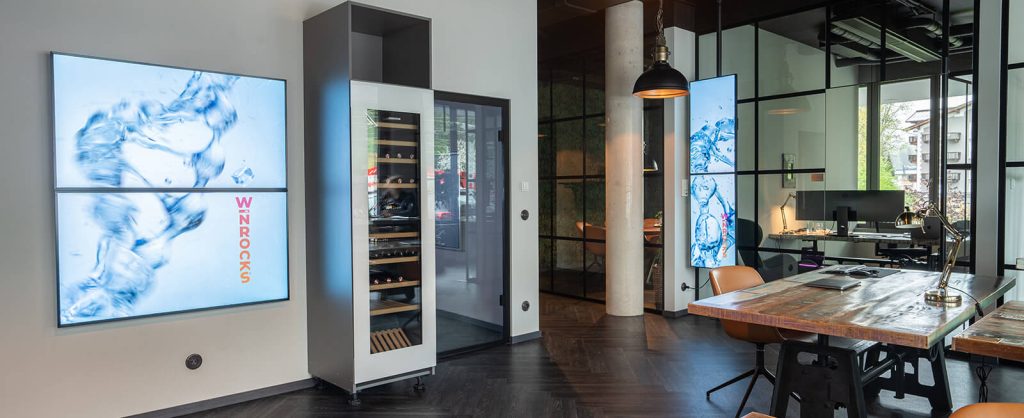
What Gets Measured, Gets Done
Workplace digital signage shouldn’t be left floating without purpose. Define KPIs: Are you aiming to reduce onboarding time? Increase participation in wellbeing initiatives? Boost NPS scores? Track it. Measure it. Optimise it.
Digital signage is no longer about screens on walls. It is about culture on display. It bridges the gap between remote and on-site, tech and human, corporate and creative.
At ZetaDisplay, we believe in making workplace communication purposeful, playful, and personal. Because when people feel informed and included, they’re not just present. They’re engaged.
Let’s build workplaces that people don’t just return to, but return for.
